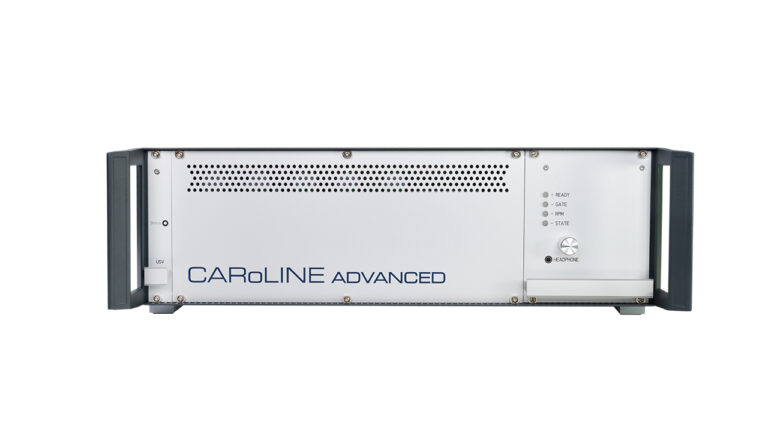During the manufacture of different vehicle components, assembly errors or the use of faulty components can occur, which can result in unwanted noise or vibrations when these components are subsequently used. To address this, Göpel Electronic has developed the Caroline series of acoustic testing systems to support quality assurance through noise and vibration analysis during production.
Caroline records noise data from a wide variety of sensors that measure vibrations or airborne sound. This data is evaluated in the associated software using a wide range of analysis options. The Caroline advanced model is supplied as a plug-in module for 19in racks or as a standalone device, and can record signals from up to eight sensors simultaneously. In addition, analog displacement/rotation angle and digital trigger signals can be recorded and the ripple current evaluation of the test object enables the use of speed-dependent analyses.
In practical applications, individual sensors are selected for each specific case and then mounted at a suitable distance from the mechatronic electric motor noise source of the test object. For example, the structure-borne noise of a seat frame is measured at its skids. The sensors are connected to the Caroline system, which, after triggering the test sequence, synchronously records and evaluates the noise levels during operation and immediately compares them with parameters and limit values stored in the system.
To realistically assess the impact of noise on driving comfort, the Caroline system employs various acoustic analysis methods, including modulation analysis. This technique evaluates the degree of fluctuation in specific frequencies during defined movements — such as the deployment of an exterior mirror. If the frequency varies significantly around a central value, it may be perceived as an undesirable “whining” sound.
Third-octave analysis of airborne sound signals supports psychoacoustic evaluations, including assessments of tonality. By analyzing specific frequency ranges in vibration or airborne sound data, it becomes possible to identify potentially disruptive noises, such as whistling, squeaking, or beeping. These types of sounds can negatively affect perceived quality and can be detected and addressed early through the systematic use of acoustic testing in production.
In related news, Infineon Technologies has collaborated with Typhoon HIL to provide automotive engineering teams with a fully integrated, real-time development and test environment for key elements of xEV powertrain systems. Read the full story


